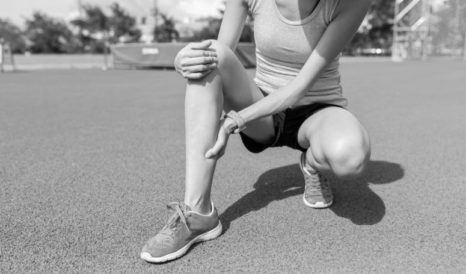What to Expect After Your ACL Surgery
ACL surgery allows for faster healing, as it has minimal impact on other structures of the knee.
ACL surgery is a very common operation. It is almost always carried out arthroscopically, which means the surgeon makes small incisions in your skin and carries out the operation using small surgical instruments and a tiny camera inserted into your knee joint.
This type of surgery allows for faster healing, as it has minimal impact on other structures of the knee.
For anyone facing ACL surgery, knowing about the recovery and rehabilitation can help put your mind at rest and put you on the right path for successful healing.
The Capital Orthopaedics team specialises in knee surgery, dedicated to making sure you get the fastest, most accurate diagnosis, the latest surgical techniques and aftercare and rehabilitation from expert physiotherapists.
Torn ACL
If you have been recommended ACL surgery, the chances are you have a complete rupture of the central ligament in your knee. For more information about this injury and the treatment for an ACL tear, click here.
Surgery for an ACL tear
 If the anterior cruciate ligament has been torn, your surgeon will reconstruct it tendon tissue from another part of your body or from a donor, and sew it in place of the damaged ACL. If you’re lucky and the ligament has simply been pulled off the bone, it can be re-attached/repaired using new arthroscopic techniques.
If the anterior cruciate ligament has been torn, your surgeon will reconstruct it tendon tissue from another part of your body or from a donor, and sew it in place of the damaged ACL. If you’re lucky and the ligament has simply been pulled off the bone, it can be re-attached/repaired using new arthroscopic techniques.
All of this takes place through tiny incisions in your skin, which means minimal collateral damage or bruising to healthy tissues.
Recovering from an ACL Tear
The good news is that, in almost all cases, you will be able to start putting weight on your leg within 24 hours of the operation and start rehabilitation exercises as soon as swelling and pain allows.
However – it does take six months of rehab before you can return to full strength in sports and physical activity.
It often helps to have a timeline, so you know roughly what to expect during your recovery journey. As all physiotherapists will tell you, it is key to stick with the programme in order to recover well and to reduce the risk of re-injury.
There are so many stories of patients who return to sport too quickly, or who assume that healing will just take place on its own, expecting to get back to full strength and agility after six months, without putting in the work…
No matter how good your surgeon, and how well the ACL operation goes, your recovery is only as good as your dedication to rehab.
At Capital Orthopaedics, our team of sports medicine professionals and physiotherapists are always on-hand to help keep you on track and support your exercise regime as you progress through the timeline.
Recovery Timeline
1 – 2 weeks
Crutches: while you can weight-bear immediately after the operation, you will be given crutches as you recover from post-op pain and swelling. It usually takes 7-10 days before you can walk comfortably without them.
If you have had other procedures, such as a repair to a meniscus tear, you may need to use crutches for longer.
NSAIDs: taking non-steroidal anti-inflammatories such as ibuprofen to manage pain and swelling.
Driving: you should be able to drive by about week two if you are off crutches and your exercises have given you enough strength to control the pedals.
Exercises: your physiotherapist will give you a programme to:
• Get a range of motion in your knee from fully extended to 90-degree bend.
• Strengthen your thigh muscles (quadriceps).
• Mobilise your kneecap (patella) by gently manipulating it with your hands.
2 – 6 weeks
Exercises will focus on:
• Strengthening the muscles around your knee using light weights and resistance bands
• Gaining a full range of motion
• Protecting your knee from stresses – this may involve wearing a knee brace to prevent any twisting.
• Proprioception and endurance – using step machine/cross-trainer / stationary bike.
6 – 24 weeks
Exercises:
- Focusing on strengthening and power
- Running on a treadmill usually permitted at three months
After 6 months
Return to full activity is possible if there are no issues with range of motion, pain or swelling.
If you have any knee pain or discomfort that affects your activity level, get in touch with a specialist as soon as possible. Getting an early diagnosis can help prevent conditions from worsening and improves your chances of full recovery with non-invasive treatments.
Contact Capital Orthopaedics here for a consultation with one of our expert orthopaedic surgeons in one of three central London locations.
Frequently Asked Questions about ACL Surgery
What Can You Not Do After ACL surgery?
You should avoid any twisting movements or full knee bends for at least 6 weeks, while the graft heals.
What Can You Do to Speed Up the Healing Process at Home?
Managing the swelling can help with healing. This can include using ice, elevating your leg as much and often as possible and taking anti-inflammatories.
Making sure that you do your exercises as often as recommended by your physiotherapist.
Gently massaging your kneecap and around your knee joint (as instructed by a physical therapist) helps to improve blood flow and stimulate faster healing.
How Can You Take Care of Your Wound?
The dressing must be left on for two days after the operation. After this, you may remove it and get your leg wet, but avoid taking a bath until you have had a wound check (usually two weeks after surgery).
